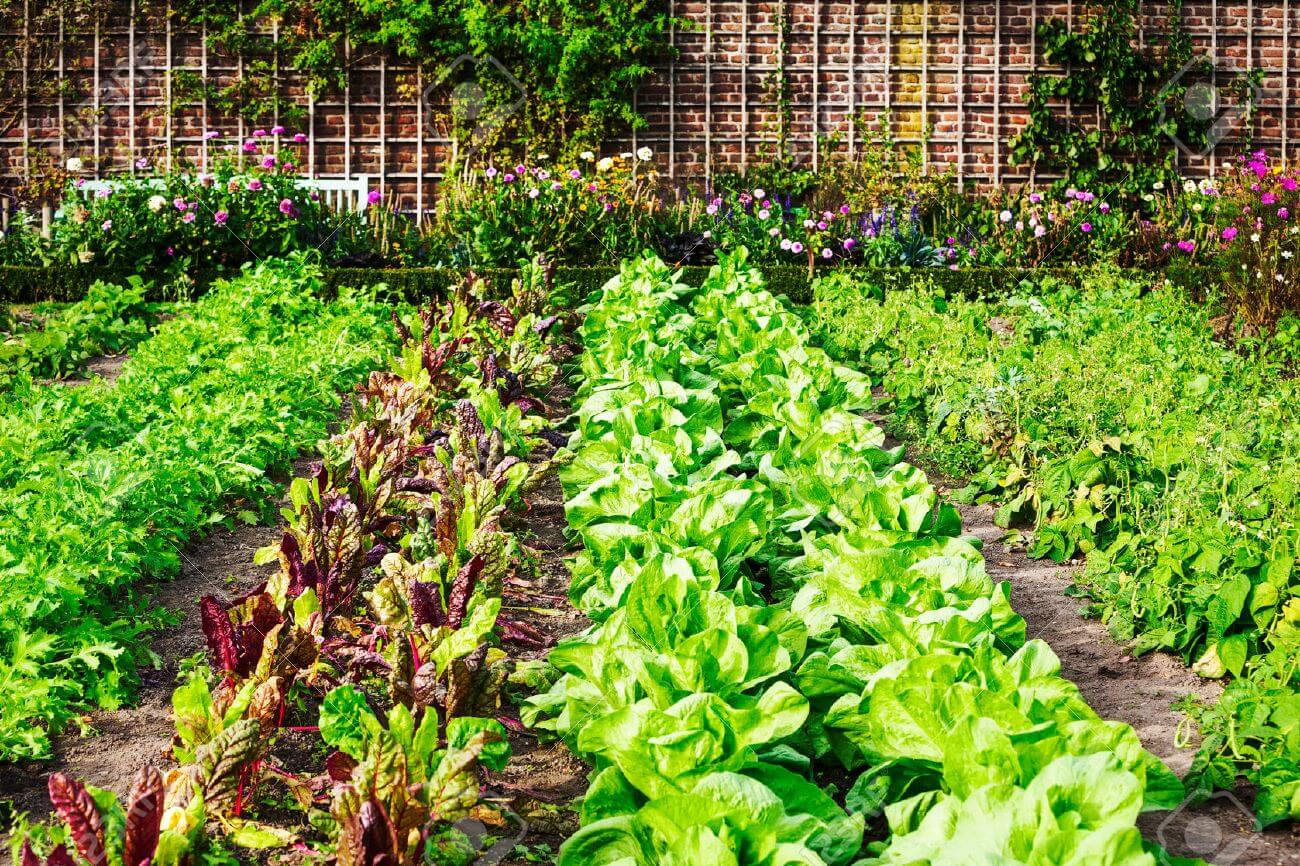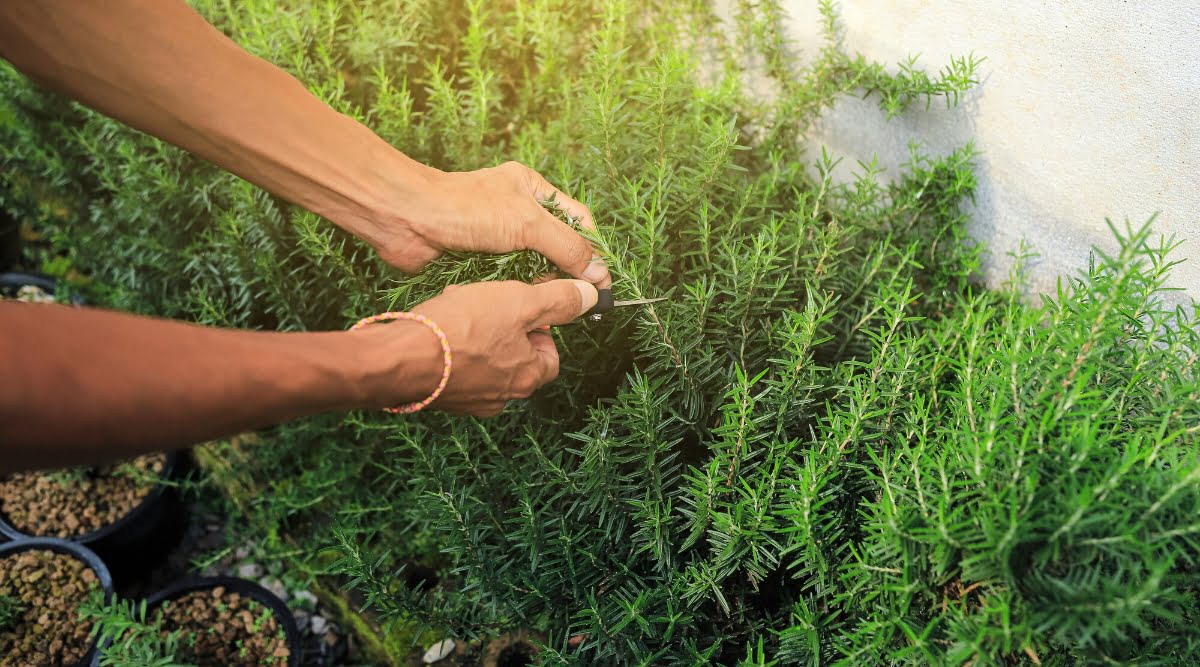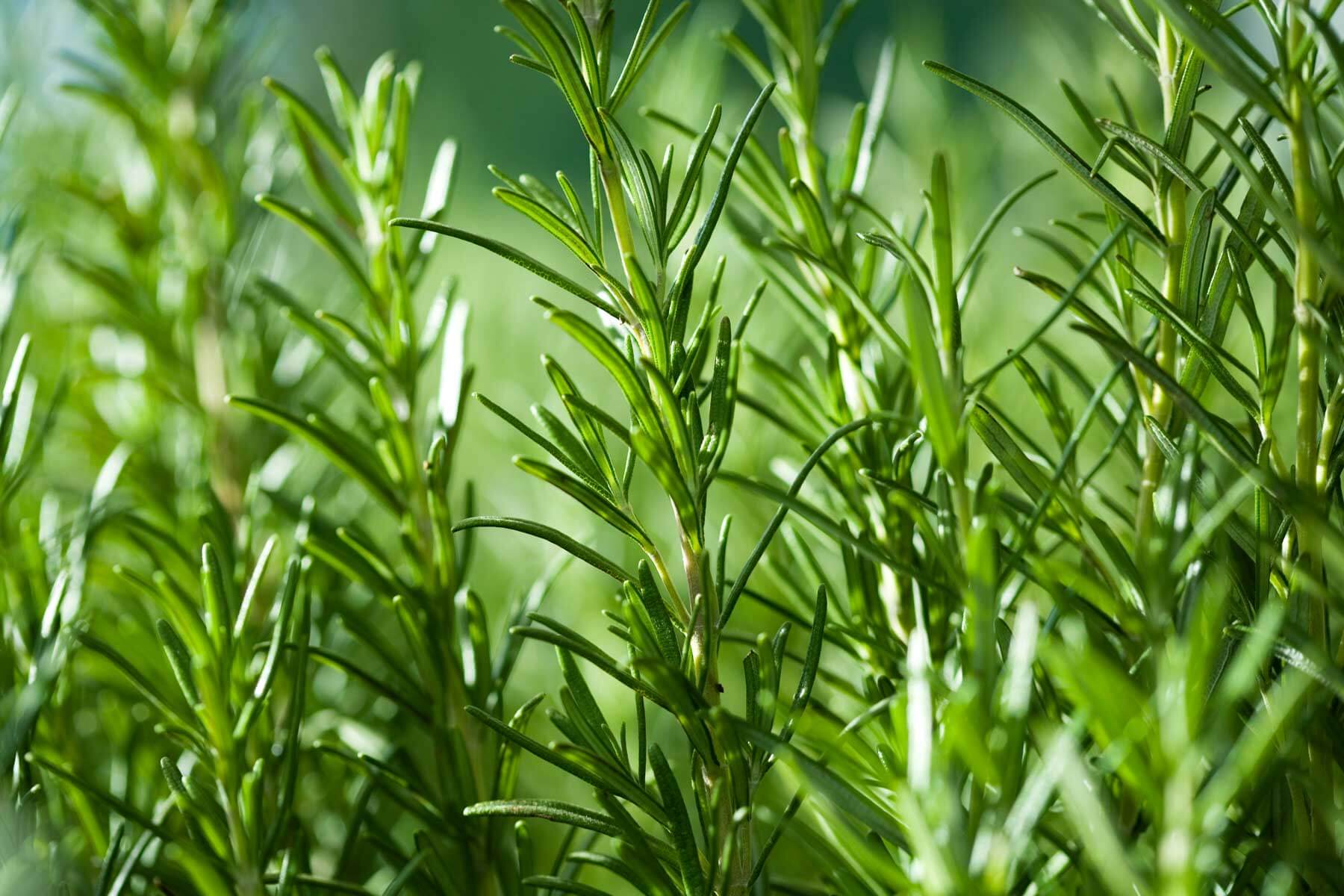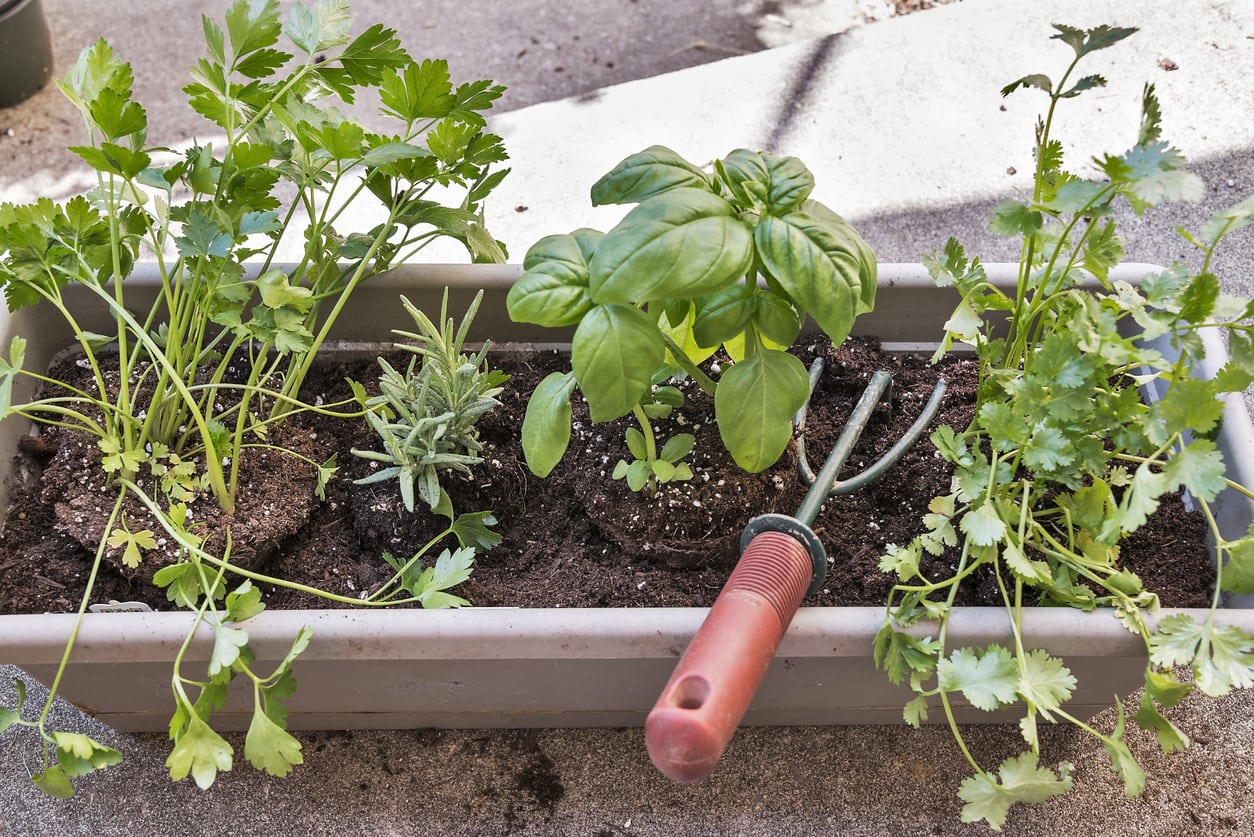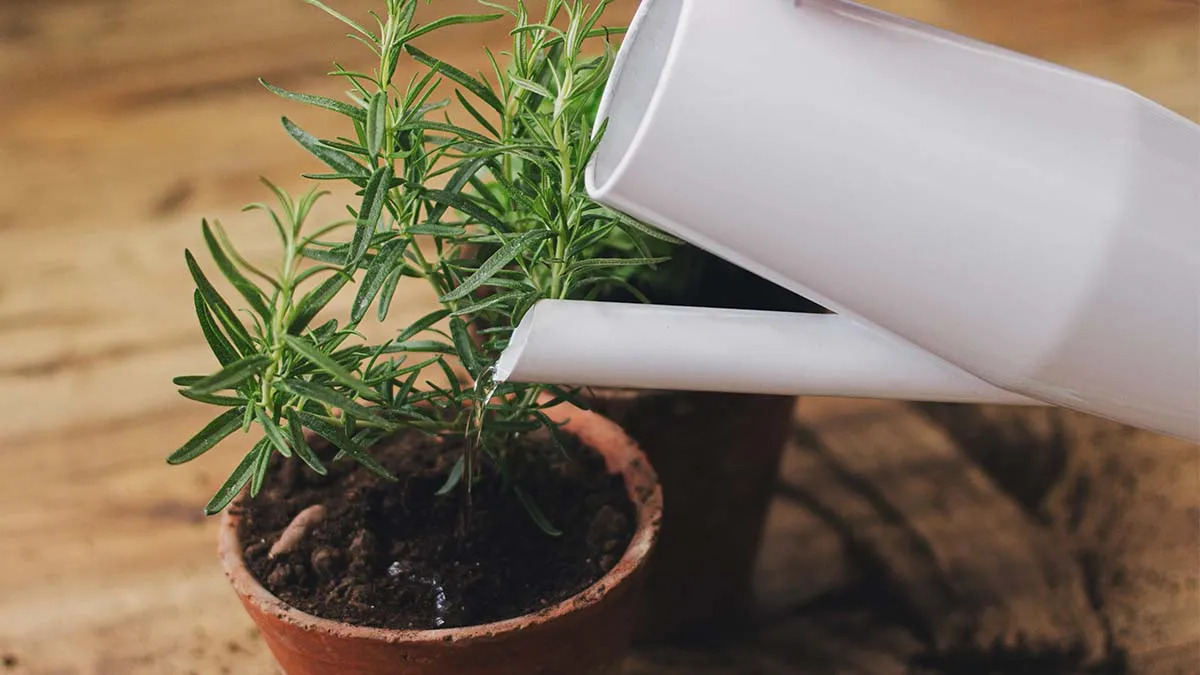Home>Types of Gardening>Edible Gardening>When To Plant Rosemary In Texas


Edible Gardening
When To Plant Rosemary In Texas
Modified: February 7, 2024
Learn when to plant rosemary in Texas and get expert tips for successful edible gardening.
(Many of the links in this article redirect to a specific reviewed product. Your purchase of these products through affiliate links helps to generate commission for Chicagolandgardening.com, at no extra cost. Learn more)
Table of Contents
Introduction
Welcome to the wonderful world of edible gardening in Texas! If you’re an avid gardener or a culinary enthusiast, growing your own herbs can be a rewarding and practical endeavor. One herb that thrives in the Texas climate and can add a burst of flavor to your dishes is rosemary.
Rosemary (Rosmarinus officinalis) is a versatile herb known for its distinct aroma and flavor. It is commonly used in Mediterranean cuisine and pairs well with various meats, vegetables, and even baked goods. Whether you’re a seasoned gardener or just starting out, growing rosemary is relatively easy and can be a great addition to your edible garden.
In this article, we will explore the best time to plant rosemary in Texas, how to prepare the soil, choosing a suitable planting location, steps to plant rosemary, caring for the plants, and even harvesting tips. So, let’s dive in and discover the joys of growing rosemary in the Lone Star State!
Climate and Growing Zones in Texas
Texas is a vast state with varying climates and growing zones, which can significantly impact the success of your edible garden. Understanding the climate and growing zones in Texas is essential for determining the best time to plant rosemary and ensuring its survival.
Texas can be divided into several growing zones based on the United States Department of Agriculture (USDA) Plant Hardiness Zone Map. The zones range from 6a in the northern parts of the state to 9a in the southern regions. These zones provide a general guideline for gardeners to determine which plants can thrive in their specific area based on average minimum winter temperatures.
When it comes to rosemary, it is well-suited for the warm climate of Texas. Rosemary is considered a hardy perennial herb and can tolerate a wide range of temperatures. It thrives in full sun, making it perfect for the hot and sunny summers in Texas.
However, it’s important to note that extreme cold temperatures can still pose a risk to rosemary plants, particularly in the northern parts of the state. If you live in Zone 6a, you may need to take extra precautions to protect your rosemary during frost or freezing events.
In addition to temperature, Texas also experiences varying levels of rainfall throughout the state. The western parts of Texas, such as the desert regions, have a semi-arid climate with low rainfall, while the eastern parts, near the Gulf Coast, have a more humid subtropical climate with higher rainfall.
When growing rosemary in Texas, it’s crucial to consider the local climate conditions and adapt your watering practices accordingly. Rosemary prefers well-draining soil and doesn’t tolerate excessive moisture, so it’s important to strike a balance and avoid overwatering.
By understanding the climate and growing zones in Texas, you can tailor your rosemary planting and care practices to ensure the best chances of success. Now that we’ve covered the basics, let’s move on to the best time to plant rosemary in Texas.
Best Time to Plant Rosemary in Texas
Choosing the right time to plant rosemary in Texas is crucial for its establishment and growth. Rosemary is a perennial herb that prefers warm temperatures and a long growing season. By selecting the appropriate planting time, you can give your rosemary plants the best chance at thriving in the Texas climate.
In Texas, the best time to plant rosemary is in the spring or fall. Spring planting allows the plants to establish strong roots and take advantage of the longer growing season ahead. Fall planting, on the other hand, gives the plants a head start in the cooler months and allows them to establish a strong root system before winter arrives.
If you’re planting rosemary from seeds, it’s advisable to start them indoors 8-10 weeks before the desired planting time. This will give the seeds ample time to germinate and develop into sturdy seedlings that can withstand the outdoor conditions.
When it comes to planting rosemary in Texas, it’s essential to consider the average frost dates for your specific zone. If you’re in Zone 6a or lower, it’s advisable to wait until after the last average frost date in spring to plant your rosemary outdoors. This will help prevent any potential damage from late frosts.
On the other hand, if you’re in Zone 7a or higher, you can take advantage of the milder winter temperatures and plant your rosemary in the fall. Aim to plant at least 6-8 weeks before the average first frost date to ensure the plants have enough time to establish before the colder temperatures arrive.
It’s important to provide your rosemary plants with optimal growing conditions during the initial establishment phase. This includes providing well-draining soil, ample sunlight, and regular watering until the plants become established.
By choosing the best time to plant rosemary in Texas and providing the right conditions, you can set your plants up for success. In the next section, we’ll explore how to prepare the soil for your rosemary plants.
Preparing the Soil
Preparing the soil is a crucial step in ensuring the success of your rosemary plants in Texas. Rosemary thrives in well-draining soil with a slightly alkaline pH. By taking the time to prepare the soil properly, you can provide your plants with the ideal growing conditions.
Start by selecting a planting area that receives at least 6-8 hours of direct sunlight daily. Rosemary loves sun and needs ample light to grow and flourish. Next, assess the existing soil in your chosen area. Texas soils can vary, but rosemary prefers sandy or loamy soil that drains well.
If your soil is heavy clay or compacted, consider improving its drainage by adding organic matter. This could include compost, aged manure, or well-rotted leaves. Incorporating organic matter into the soil helps improve its structure, allowing excess water to drain away more efficiently.
Before planting, it’s a good idea to perform a soil test to determine its pH level. Rosemary prefers a slightly alkaline soil with a pH between 6 and 7. If your soil is too acidic, you can raise the pH by adding lime or wood ash. Conversely, if it is too alkaline, you can lower the pH by incorporating sulfur or other acidifying amendments.
When preparing the soil, remove any weeds or grass from the planting area, as they can compete with your rosemary plants for nutrients and water. It’s also a good idea to loosen the soil with a garden fork or tiller, breaking up any compacted areas and ensuring proper root penetration.
Once you have prepared the soil, it’s time to plant your rosemary. In the next section, we will discuss how to choose a suitable planting location for your rosemary plants in Texas.
Choosing a Planting Location
Choosing the right planting location is key to the success of your rosemary plants in Texas. Rosemary thrives in conditions that mimic its native Mediterranean environment—lots of sunlight, well-draining soil, and good air circulation.
When selecting a planting location, prioritize an area that receives at least 6-8 hours of direct sunlight daily. This will ensure your rosemary plants receive the necessary light for healthy growth and abundant flavor. Without sufficient sunlight, rosemary plants may become leggy and produce fewer aromatic leaves.
Additionally, rosemary requires well-draining soil to prevent root rot and other issues. Avoid planting in areas prone to puddling or areas with heavy clay soil. Instead, opt for sandy or loamy soil that will allow excess water to drain away easily. If your soil tends to retain moisture, consider raising the planting area by using a raised bed or adding compost to improve drainage.
Adequate air circulation is also important for rosemary plants, as it helps prevent the onset of diseases. Avoid planting rosemary in tight, crowded spaces or areas with poor airflow. Instead, space your plants at least 2-3 feet apart to allow for proper ventilation. This will also prevent the spread of pests and diseases among your rosemary plants.
If you’re limited in space, you can also consider growing rosemary in containers. This allows you to control the soil, sunlight exposure, and airflow. Choose a container with good drainage holes and fill it with well-draining potting mix specifically formulated for herbs.
When selecting a planting location, also consider the proximity to other plants in your edible garden. Rosemary can act as a companion plant, repelling certain pests and attracting beneficial insects. Placing rosemary near vegetables such as cabbage, carrots, and beans can help deter unwanted pests and promote a healthy garden ecosystem.
By choosing a suitable planting location that provides ample sunlight, well-draining soil, and good air circulation, you can ensure the optimal growth and health of your rosemary plants in Texas. In the next section, we will discuss the step-by-step process of planting rosemary.
Steps to Planting Rosemary in Texas
Now that you have chosen the ideal planting location for your rosemary plants in Texas, it’s time to dig in and get your hands dirty. Follow these step-by-step instructions to ensure a successful planting process:
- Prepare the soil: Begin by preparing the soil in your chosen planting area. Remove any weeds, grass, or rocks, and amend the soil as needed to improve drainage and pH level.
- Dig the planting hole: Dig a hole that is twice the size of the root ball of your rosemary plant. Make sure the hole is deep enough to accommodate the entire root system without crowding it.
- Add organic matter: Incorporate some well-rotted compost or aged manure into the bottom of the planting hole. This will provide a nutrient-rich environment for your rosemary plants.
- Remove the plant from its container: Gently remove the rosemary plant from its container, being careful not to damage the roots. If the roots are tightly bound, you can gently tease them apart to encourage outward growth.
- Place the plant in the hole: Position the rosemary plant in the center of the hole, making sure it is at the same level as the surrounding soil. Avoid burying the plant too deeply, as this can lead to root rot.
- Backfill the hole: Fill the hole with the amended soil, gently firming it around the plant to remove any air pockets. Take care not to compact the soil too much, as it can hinder root development.
- Water thoroughly: After planting, give your rosemary plant a deep watering to help settle the soil and ensure proper hydration. Provide enough water to moisten the entire root zone.
- Mulch around the plant: Apply a layer of organic mulch, such as wood chips or straw, around the base of the plant. This will help conserve moisture, suppress weeds, and regulate soil temperature.
- Monitor and maintain: Keep an eye on your newly planted rosemary and provide regular care. Water when the top inch of soil feels dry, but be cautious not to overwater as rosemary prefers slightly drier conditions.
Following these steps will give your rosemary plants the best start in their new home. With proper care and attention, your rosemary plants will thrive and provide you with an abundance of aromatic leaves for your culinary creations.
In the next section, we will discuss essential care tips to keep your rosemary plants healthy in the Texas climate.
Caring for Rosemary Plants in Texas
Caring for rosemary plants in Texas involves providing them with the right conditions and regular maintenance to ensure their health and productivity. Here are some essential care tips to follow:
- Watering: Rosemary plants in Texas prefer slightly drier conditions, so it’s important not to overwater them. Water deeply but infrequently, allowing the top inch of soil to dry out before watering again. Avoid overhead watering, as moisture on the leaves can lead to fungal diseases.
- Pruning: Regular pruning helps keep rosemary plants bushy and compact. Trim the plants after flowering or in early spring to remove any dead or damaged growth. You can also shape the plants to your desired form, but avoid pruning more than one-third of the plant at a time.
- Fertilizing: Rosemary plants in Texas do not require heavy fertilization. A yearly application of a balanced organic fertilizer in early spring can provide the necessary nutrients. Avoid over-fertilizing, as this can lead to excessive leaf growth without much flavor or aroma.
- Protecting during extreme cold: While rosemary is generally hardy in Texas, extreme cold temperatures can still pose a risk. In colder regions, consider covering the plants with frost blankets or bringing potted plants indoors during freezing events to protect them from frost damage.
- Controlling pests: Rosemary plants are relatively resistant to pests, but some common pests in Texas, such as aphids and spider mites, can occasionally infest them. Monitor your plants regularly and take prompt action if you notice any signs of pest infestation. Use organic pest control methods or consult with a local garden center for appropriate solutions.
- Providing winter protection: In colder parts of Texas, it may be necessary to provide additional winter protection for your rosemary plants. Mulching around the base of the plants with a layer of organic material can help insulate the roots and protect them from freezing temperatures.
- Harvesting: Rosemary leaves can be harvested throughout the year, but it’s best to take cuttings in the morning when the plant’s essential oils are most concentrated. To harvest, simply snip off a few sprigs from the plant, leaving enough foliage for the plant to continue growing. Avoid pruning more than one-third of the plant at once.
By following these care tips, you can keep your rosemary plants healthy and productive throughout the growing season. Remember to monitor your plants regularly, adjust care practices as needed, and enjoy the fresh aromas and flavors that rosemary adds to your culinary endeavors.
In the next section, we will explore common pests and diseases that may affect rosemary plants in Texas and how to manage them.
Common Pests and Diseases
While rosemary plants are generally resistant to pests and diseases, they can sometimes be susceptible to certain issues, especially in the diverse climate of Texas. Being aware of common pests and diseases that may affect rosemary can help you take proactive measures to prevent and manage them.
1. Aphids: These tiny insects may cluster on the tips of new growth, sucking sap from the plant. Regularly inspect your rosemary plants for aphid infestations, and if present, you can dislodge them with a strong jet of water or use insecticidal soap as a natural control method.
2. Spider Mites: Spider mites are common in hot and dry conditions. These tiny pests may cause yellowing, stippling, and webbing on the leaves. Regularly misting the foliage and using insecticidal soap can help control spider mite populations.
3. Root Rot: Overwatering or poorly draining soil can lead to root rot, which can cause the roots of rosemary plants to become waterlogged and decay. To prevent root rot, ensure that the soil has good drainage, and avoid overwatering the plants.
4. Powdery Mildew: Powdery mildew is a fungal disease that can affect rosemary plants, especially in humid conditions. It appears as a white powdery coating on the leaves. To prevent powdery mildew, provide adequate air circulation, avoid overhead watering, and consider applying a fungicide if the problem persists.
5. Rosemary Leaf Beetle: This beetle, native to Europe, has become an emerging pest in some parts of Texas. The adult beetles and larvae feed on the foliage of rosemary plants, causing defoliation. Handpicking and applying insecticidal soap or neem oil can help control rosemary leaf beetles.
6. Deer and Rabbits: In some areas of Texas, deer and rabbits may find rosemary plants tasty. To prevent damage, consider using physical barriers, such as fences or netting, to protect your plants.
Regularly inspecting your rosemary plants for any signs of pests or diseases and taking appropriate measures can help maintain their health and productivity. It’s recommended to consult with local gardening resources or experts for specific pests and diseases prevalent in your region in Texas and the most effective control methods.
Now that we’ve covered common pests and diseases, let’s move on to the exciting part—harvesting rosemary.
Harvesting Rosemary in Texas
Harvesting rosemary is a rewarding process that allows you to enjoy the aromatic and flavorful leaves in your culinary creations. Rosemary can be harvested throughout the year in Texas, but there are a few things to keep in mind to ensure a successful harvest:
Timing: It’s best to harvest rosemary in the morning when the plant’s essential oils are at their peak concentration. As a general rule, wait until your rosemary plants are at least 6 to 8 inches tall before starting to harvest, as this will allow the plants to establish a strong root system.
Leaf Cutting: To harvest the leaves, simply snip off the sprigs with a pair of sharp pruners or kitchen scissors. For the best flavor and aroma, it’s recommended to cut the younger, tender stems rather than the woody older ones. Avoid pruning more than one-third of the plant at once to ensure continued healthy growth.
Harvesting Techniques: You can choose to harvest rosemary sprigs individually or opt for a method called “bunching.” Bunching involves gathering a handful of sprigs and tying them together with a string or rubber band. This method can be convenient for drying or using large quantities of rosemary at once.
Preservation: Rosemary can be used fresh or preserved for later use. To store fresh rosemary, place the sprigs in a glass of water like a bouquet, and keep them in the refrigerator. You can also dry rosemary by hanging the sprigs upside down in a well-ventilated and dry area until they become crispy. Store the dried rosemary in an airtight container in a cool, dark place.
Remember that rosemary’s flavor and aroma are most potent when used fresh, so try to use it as soon as possible after harvesting. However, dried rosemary can still add a delightful flavor to your dishes, especially during the winter months when fresh herbs may be less readily available.
Enjoy the process of harvesting rosemary and discovering the multitude of ways it can elevate your dishes. Whether you’re adding it to roasted vegetables, marinades, soups, or infused oils, the distinct scent and flavor of rosemary will enhance your culinary creations.
Now that we’ve covered the ins and outs of harvesting rosemary, let’s conclude our journey through the wonderful world of edible gardening in Texas.
Conclusion
Congratulations on your newfound knowledge of growing and caring for rosemary in the diverse climate of Texas! By understanding the best time to plant, preparing the soil, choosing a suitable location, and following proper care techniques, you can enjoy a bountiful supply of this versatile herb throughout the year.
Remember that rosemary thrives in full sun, well-draining soil, and slightly drier conditions. Regular pruning, proper watering, and monitoring for pests and diseases are essential for maintaining the health and productivity of your rosemary plants.
With its distinct aroma and flavor, rosemary will add a delightful touch to your culinary creations. Whether you’re seasoning meats, infusing oils, or simply enjoying the scent as you brush past the plant, rosemary will create a sensory experience that showcases the joys of edible gardening.
As you venture into the world of edible gardening, don’t limit yourself to just rosemary. Texas offers a rich environment for growing a variety of herbs, fruits, and vegetables. Consider exploring other herbs like thyme, oregano, and basil, or dive into growing your own fresh produce to enhance your culinary adventures.
Remember to adapt your gardening practices to your specific region and local climate conditions within Texas, as variations can significantly impact plant growth and success. Consult local gardening resources, extension offices, and fellow gardeners for additional guidance and support.
So, get your hands in the soil, embrace the joys of growing rosemary, and savor the satisfaction of harvesting and using your homegrown herbs. Happy gardening in the Lone Star State!

